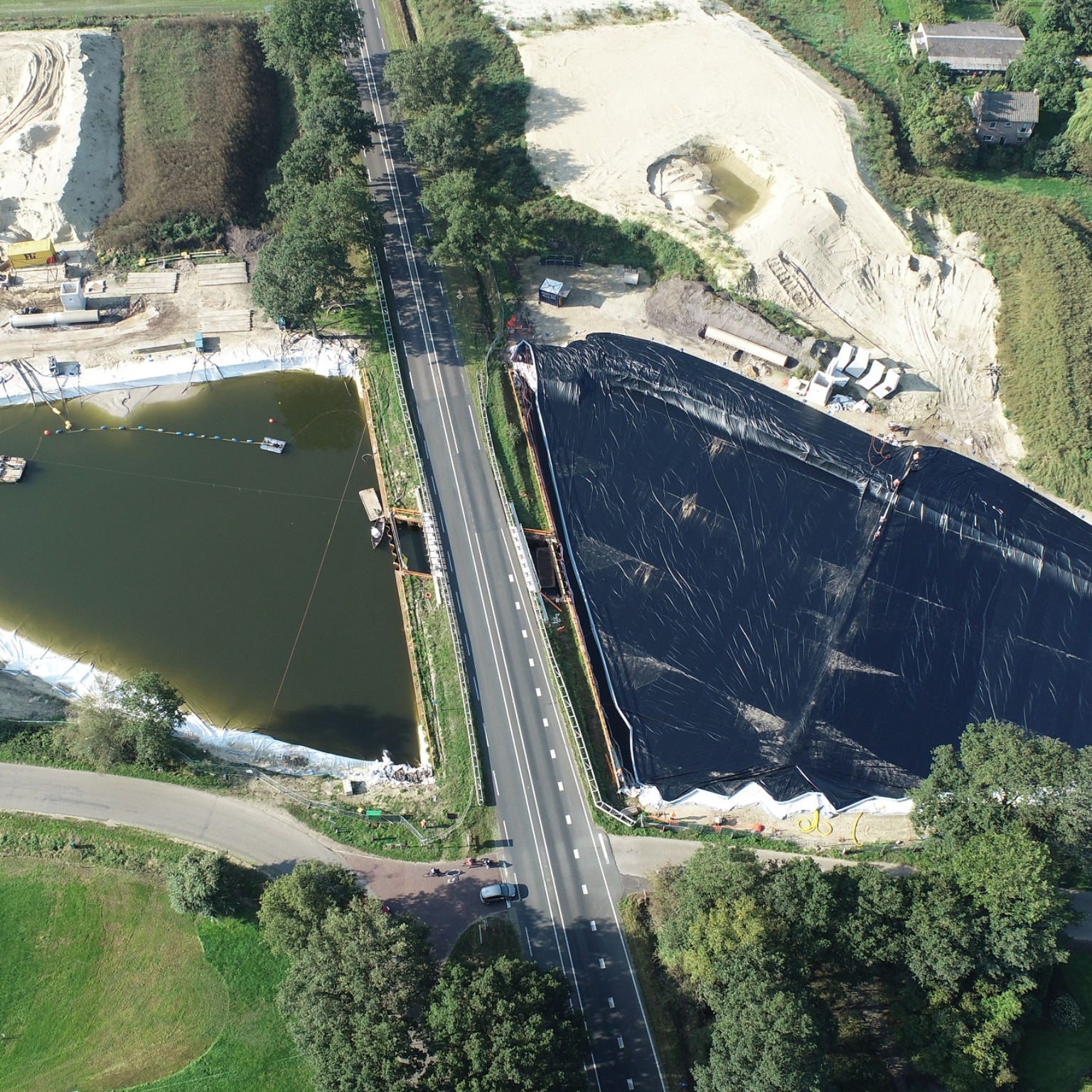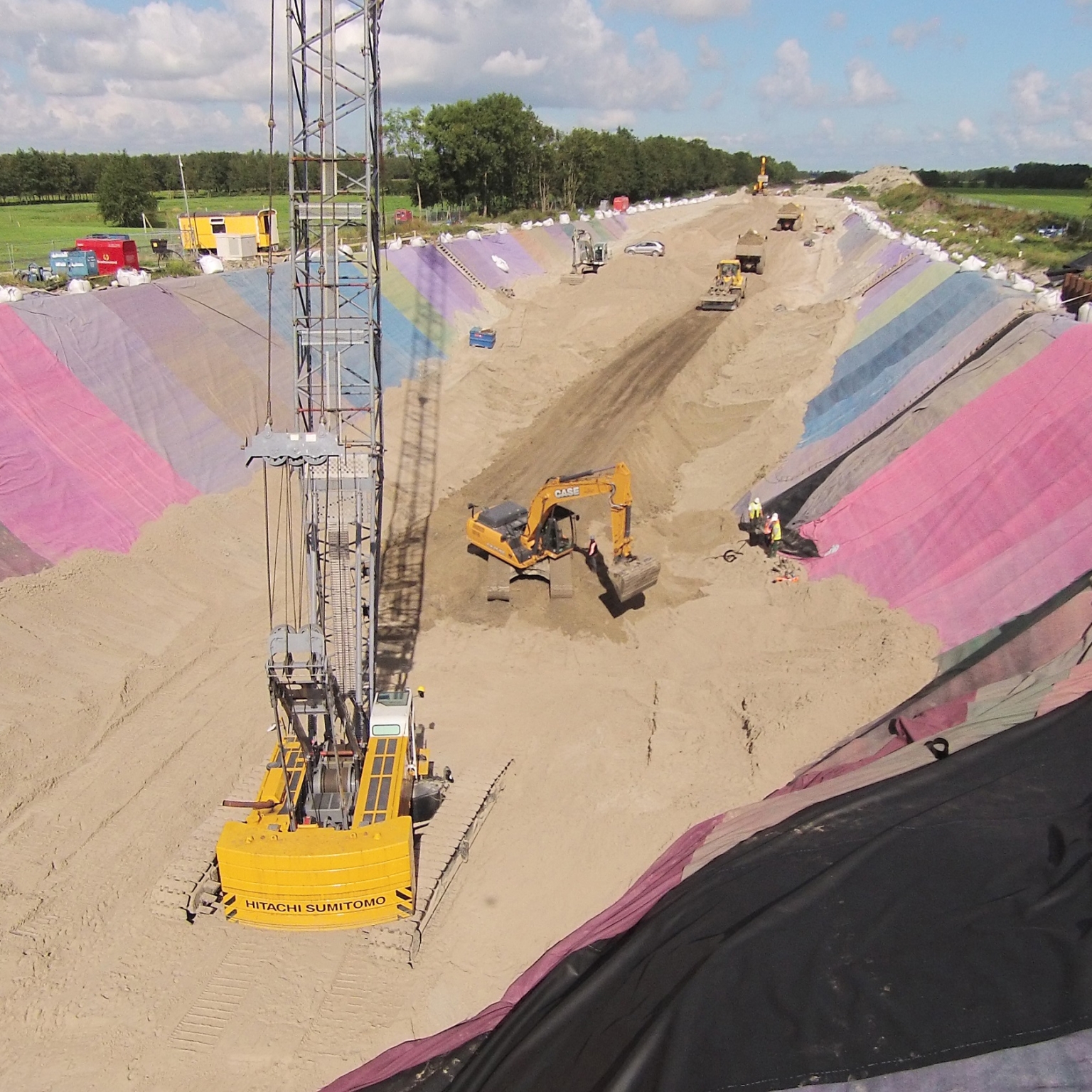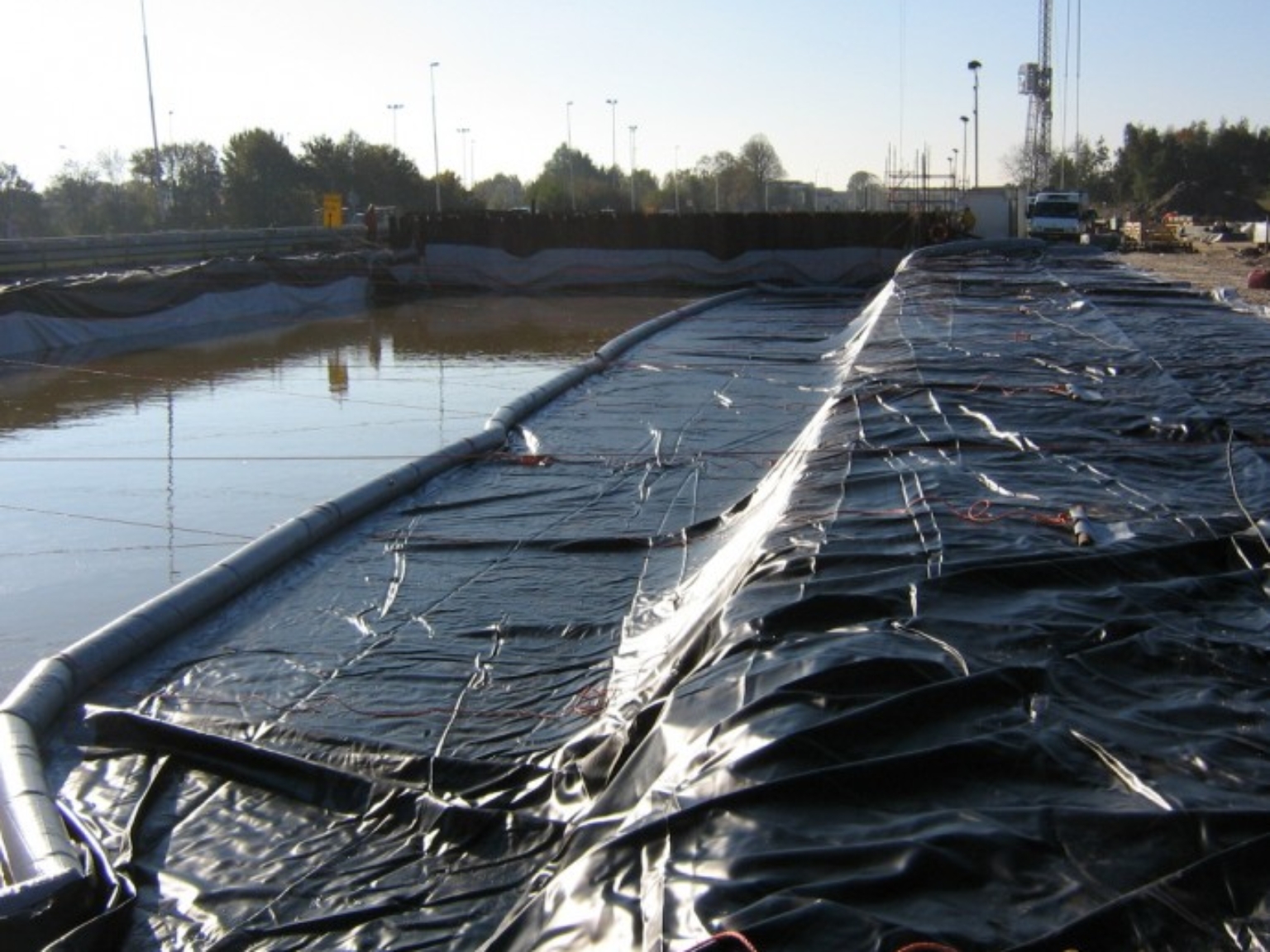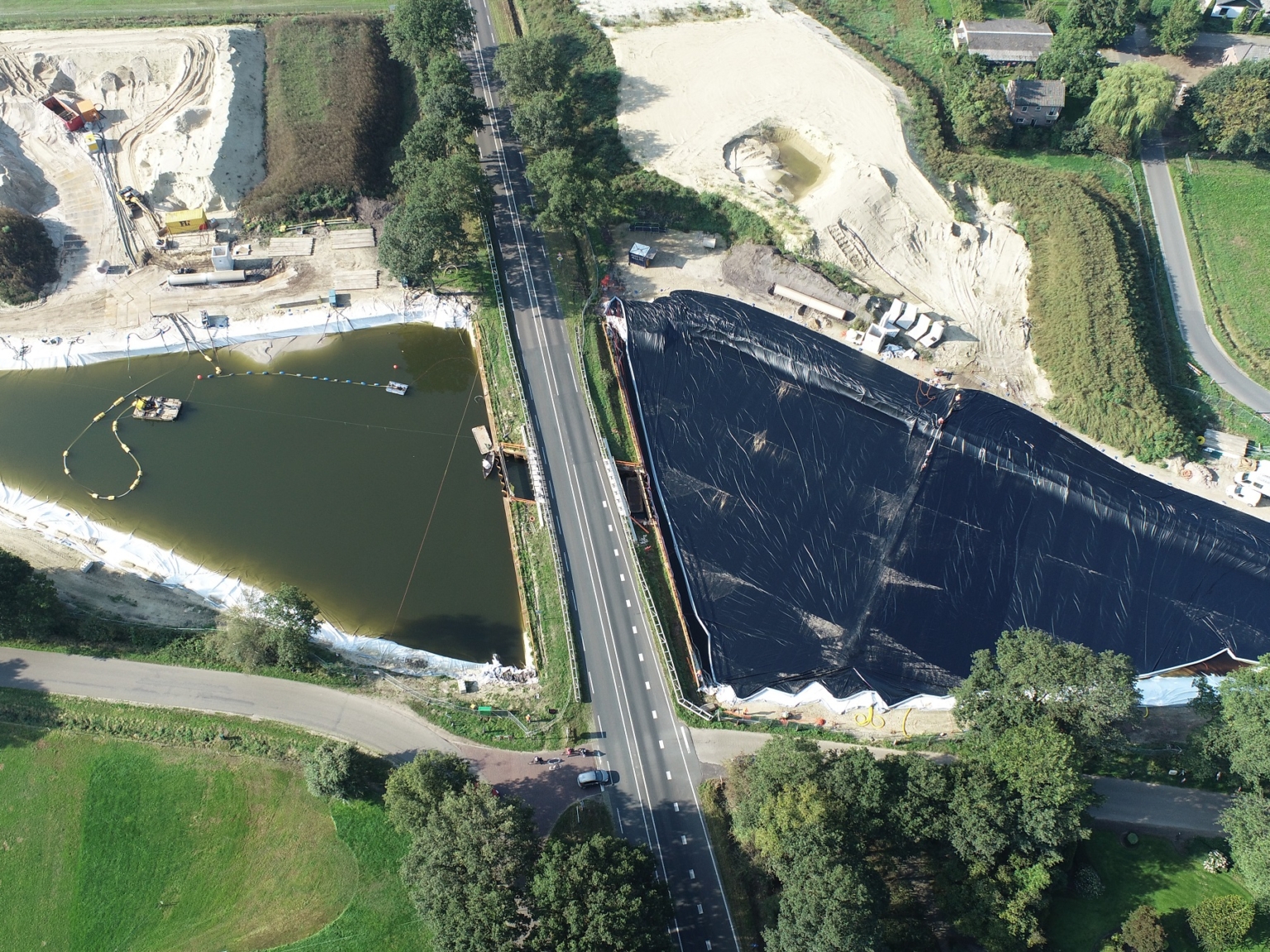Would you like more information or non-binding advice? Please fill in the form below and we will contact you as soon as possible.
"*" indicates required fields
In civil engineering, approaches to underpasses, aqueducts, and sunken roadways often incorporate geomembrane constructions as groundwater barriers. The waterproof membrane must be installed at such a level that vertical equilibrium is maintained to prevent the construction from floating.
The installation of the geomembrane at depth can be done in two ways: through the sinking of geomembrane constructions, and the application of geomembranes in dry conditions. In both methods, Genap has years of experience and has completed a significant number of impressive projects.

By applying a synthetic layer, a waterproof barrier is created, allowing the infrastructure to be constructed in dry conditions.

In dry installation, a synthetic construction is applied for, among others, access ramps, underpasses of tunnels, aqueducts, and sunken roadways.

For the reconstruction of the Peelo Zuid road section, an underpass intersection and bicycle tunnel are planned, with membrane layers for construction pits following the U-polder principle. Genap supplied 8,000 m² of PVC membrane and 4,000 m² of protective fleece for this project for BAM Wegen bv, where spatial constraints necessitated an innovative approach.

To enhance traffic safety, Genap has created construction pits for new underpasses along the N348 between Raalte and Ommen. This intervention eliminates hazardous intersections at the Oude Twentseweg and Dalmsholterdijk, signifying a significant improvement in traffic flow.
